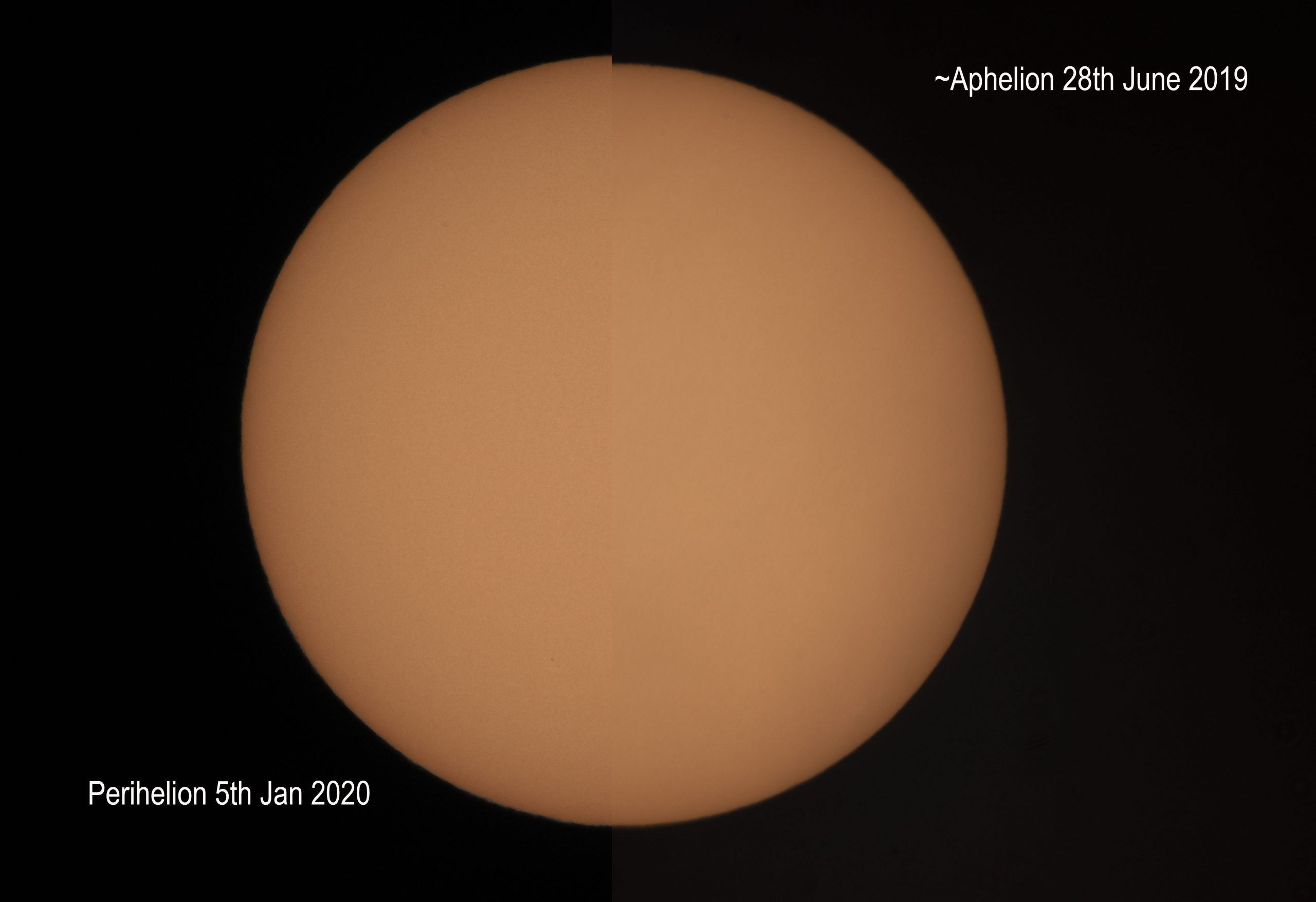2020 January 9
Perihelion to Aphelion
Image Credit & Copyright: Ian Griffin (Otago Museum)
Explanation: Perihelion for 2020, the point in Earth’s elliptical orbit when it is closest to the Sun, occurred on January 5th. The distance from the Sun doesn’t determine the seasons, though. Those are governed by the tilt of Earth’s axis of rotation, so January is still winter in the north and summer in southern hemisphere. But it does mean that on January 5 the Sun was at its largest apparent size. This composite neatly compares two pictures of the Sun, both taken from planet Earth with the same telescope and camera. The left half was captured on the date of the 2020 perihelion. The right was recorded only a week before the July 4 date of the 2019 aphelion, the farthest point in Earth’s orbit. Otherwise difficult to notice, the change in the Sun’s apparent diameter between perihelion and aphelion amounts to a little over 3 percent. The 2020 perihelion and the preceding 2019 aphelion correspond to the closest and farthest perihelion and aphelion of the 21st century.
近日点与远日点的太阳
影像提供与版权: Ian Griffin (Otago Museum)
说明: 在椭圆轨道上,地球于1月5日运行到2020年最靠近太阳的近日点。不过,地球的季节并非由地球与太阳的距离主导。季节的实际成因是地球自转轴的倾斜,因此,1月仍然是北半球的冬天及南半球的夏天。然而于1月5日那天,太阳的视大小的确是最大。这幅组合影像很简洁的比较2张太阳照片,二者皆使用同一部望远镜和相机摄于地球上。左图摄于2020年近日点那天,右图则摄于2019年7月4日远日点那天的前一星期。近日点和远日点太阳的视直径差异,只稍多于百分之三,所以通常难以分辨。 2020年的近日点和2019年的远日点,恰好也是21世纪的所有近日点和远日点中,最靠近和最远离太阳者。



